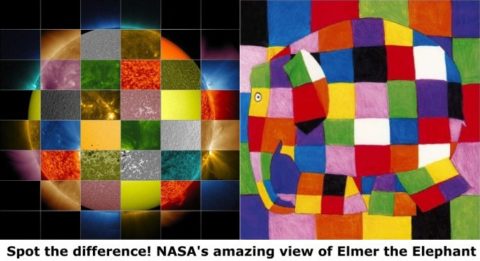 Often a name change, a brand re-launch or a corporate makeover becomes a matter of urgency when a company gets seriously bad press. I could list a few examples but will spare their blushes (#subtweet). Of course, when it comes to a phenomenon, the same thing can happen. Think global warming morphing into climate change. Of course, that was more about greater scientific understanding, public acceptance of the various trends and issues that arise and a dawning realisation that rising global average temperatures, through the greenhouse effect, are just one factor.
Often a name change, a brand re-launch or a corporate makeover becomes a matter of urgency when a company gets seriously bad press. I could list a few examples but will spare their blushes (#subtweet). Of course, when it comes to a phenomenon, the same thing can happen. Think global warming morphing into climate change. Of course, that was more about greater scientific understanding, public acceptance of the various trends and issues that arise and a dawning realisation that rising global average temperatures, through the greenhouse effect, are just one factor.
Asfaw Beyene of the Department of Mechanical Engineering at San Diego State University and chemical engineer Ron Zevenhoven of the Thermal and Flow Engineering Laboratory, at Ã…bo Akademi University in Finland, have now considered the notion of global thermodynamics in the wake of rising atmospheric carbon dioxide levels. They suggest that it’s time for a makeover and that rather than focusing on temperature, we should also now consider the many other factors involved in climate change – air pressure, wind speed and humidity etc.
The team has introduced the concept of “Equivalent Rate of Evaporation” (ERE), which they say provides better estimates of how enthalpy of vaporization affects climate change. “This approach offers a more lucid understanding of the climate model, with indubitably more accurate results,” the team says. The researchers point out that the earliest models of climate change did not distinguish between vertical and horizontal energy or include a temperature stratification. Later, models took this into account but this led to there being two parallel modelling systems, which the researchers suggest widens the error bars on predictions. All of which has provided denialists with ammunition over the years.
Beyene and Zevenhoven are, one might now suggest, reclaiming climate change science and putting it on a firmer, thermodynamic, footing. Two boundaries are proposed to form a control volume of the atmosphere – one, the traditional boundary at the top of the atmosphere, and the other inner boundary, at some superficial depth of the earth. Energy and mass that cross the inner boundary of the control volume are the only possible causes of anthropogenic climate change, Beyene explains. Moreover, the team asserts that temperature is just another “coordinate” in the system and so the only accurate measure of climate change must look at the energy balance of the atmosphere as a whole. From such an approach those other factors, wind, pressure, humidity as well as temperature change will feed into a new model with tighter error bars, a reduction in secondary modelling artefacts and a better chance of predicting global warming and thence climate change. This would not be so much a makeover as a much-needed complete overhaul of climate science.
 Beyene A. (2013). Thermodynamics of climate change, International Journal of Global Warming, 5 (1) 18-29. DOI:
Beyene A. (2013). Thermodynamics of climate change, International Journal of Global Warming, 5 (1) 18-29. DOI:
 2-Cyanoguanidine, also known as DCD (dicyandiamide) is a nitrile derived from guanidine used as a curative agent for epoxy resins in packaging.
2-Cyanoguanidine, also known as DCD (dicyandiamide) is a nitrile derived from guanidine used as a curative agent for epoxy resins in packaging.
 Often a name change, a brand re-launch or a corporate makeover becomes a matter of urgency when a company gets seriously bad press. I could list a few examples but will spare their blushes (#subtweet). Of course, when it comes to a phenomenon, the same thing can happen. Think global warming morphing into climate change. Of course, that was more about greater scientific understanding, public acceptance of the various trends and issues that arise and a dawning realisation that rising global average temperatures, through the greenhouse effect, are just one factor.
Often a name change, a brand re-launch or a corporate makeover becomes a matter of urgency when a company gets seriously bad press. I could list a few examples but will spare their blushes (#subtweet). Of course, when it comes to a phenomenon, the same thing can happen. Think global warming morphing into climate change. Of course, that was more about greater scientific understanding, public acceptance of the various trends and issues that arise and a dawning realisation that rising global average temperatures, through the greenhouse effect, are just one factor.